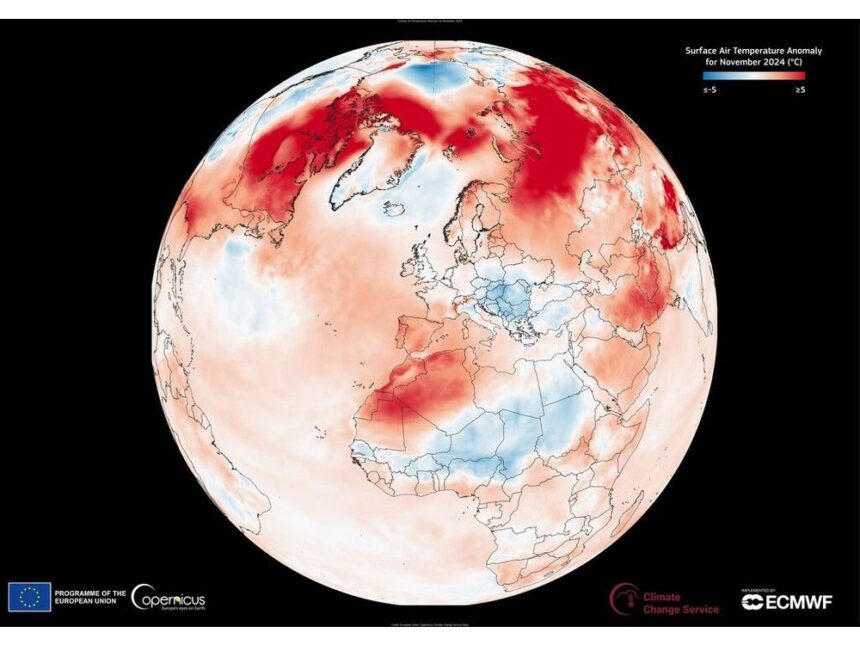Entering this week’s COP 30, the annual climate summit that opened in Brazil on Monday, only one-third of the countries that signed the UN Framework Convention on Climate Change (64 out of 198) had submitted plans for reducing their greenhouse gas emissions. Photo by File Photo /European Union, Copernicus ClimaArticle contentPopulist parties are already in power in some developed countries and waiting just outside the door in many more. The key trick of populist politicians is to tell the voters what they want to hear, and the voters definitely do not want their lives to be disrupted by global heating, so they are told it is not happening. It’s “the world’s biggest con”, in Donald Trump’s words.THIS CONTENT IS RESERVED FOR SUBSCRIBERS ONLY.Subscribe now to access this story and more:Unlimited access to the website and appExclusive access to premium content, newsletters and podcastsFull access to the e-Edition app, an electronic replica of the print edition that you can share, download and comment onEnjoy insights and behind-the-scenes analysis from our award-winning journalistsSupport local journalists and the next generation of journalistsSUBSCRIBE TO UNLOCK MORE ARTICLES.Subscribe or sign in to your account to continue your reading experience.Unlimited access to the website and appExclusive access to premium content, newsletters and podcastsFull access to the e-Edition app, an electronic replica of the print edition that you can share, download and comment onEnjoy insights and behind-the-scenes analysis from our award-winning journalistsSupport local journalists and the next generation of journalistsRegister to unlock more articles.Create an account or sign in to continue your reading experience.Access additional stories every monthShare your thoughts and join the conversation in our commenting communityGet email updates from your favourite authorsSign In or Create an AccountorArticle contentArticle contentArticle contentArticle contentThese lies have consequences. Entering this week’s COP 30, the annual climate summit that opened in Brazil on Monday, only one-third of the countries that signed the UN Framework Convention on Climate Change (64 out of 198) had submitted their plans for reducing their greenhouse gas emissions.Article contentArticle contentEvery member is supposed to improve their ‘Nationally Determined Contributions’ to cutting emissions every five years and new NDCs are due this year, but they are being ignored by most countries this time around. Money is tight, wars are a huge distraction, and climate has become unfashionable, so we’ll just have to wait and hope for better times.Article contentArticle contentThat could be a plausible, even a sensible strategy if we were still in the nineties or the noughties, when climate change was still seen as a slow, linear, and above all predictable process. But we now know that like most natural processes, climate change usually happens in sudden lurches: you cross an invisible threshold, and suddenly you are in a changed world.Article contentArticle contentArticle contentIt’s not just plain old physics, which gives you nice, smooth curves. With the biosphere, you are dealing with complex systems that can change in abrupt and unforeseen ways. They may also resist attempts to switch them back to the original climate state.Article contentArticle contentUPWARD TRENDArticle contentArticle contentThis is the world that today’s climate scientists inhabit: they know that the trend is relentlessly upward in temperature, but they also now know that the warming may accelerate if they cross one of those invisible thresholds.Article contentArticle contentIndeed, that is why the scientists persuaded their political masters back in 2018 to set a ‘do not exceed’ target for average global temperature of 1.5 degrees Celsius above the pre-industrial level (+1.5°C). But it turned out that they were still being too optimistic.Article contentArticle contentIn 2023 the average global temperature suddenly jumped by about a third of a degree in the single month of June, all the way up to that ‘do not exceed’ level of +1.5°C – and it has been around there ever since. The previous assumption was that we wouldn’t get there until the mid-2030s. What happened?
GWYNNE DYER: COP 30: Marking time












